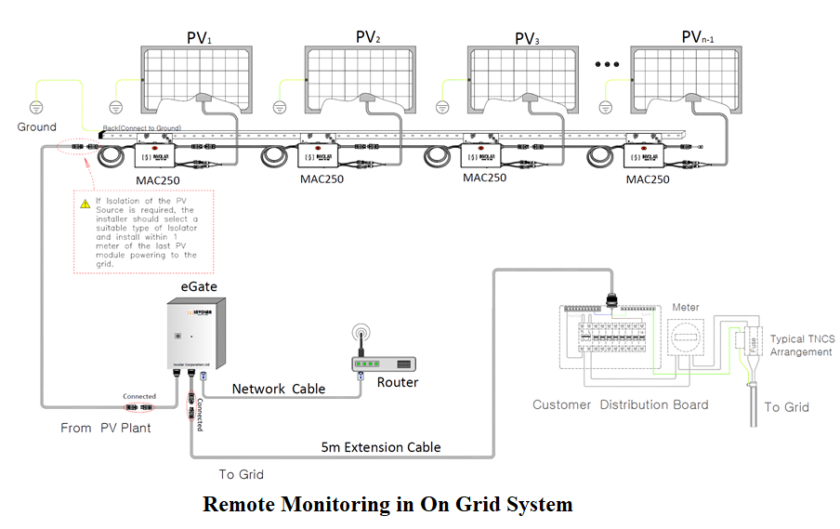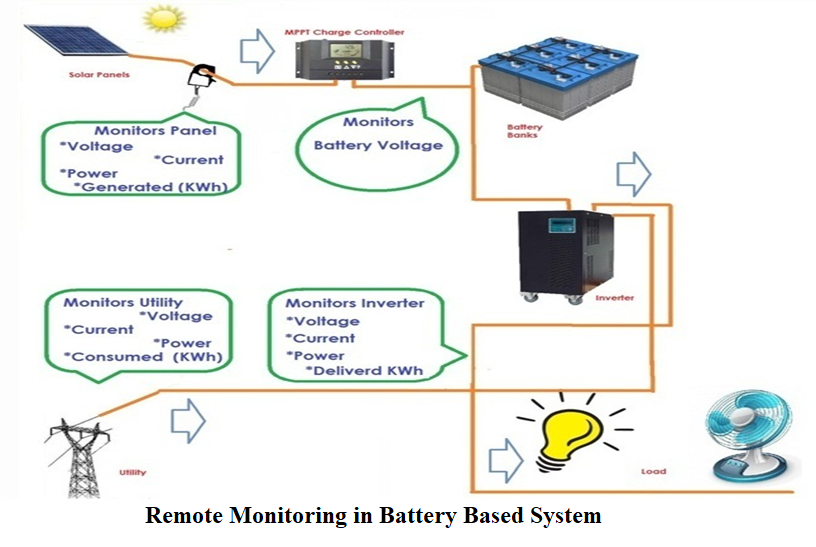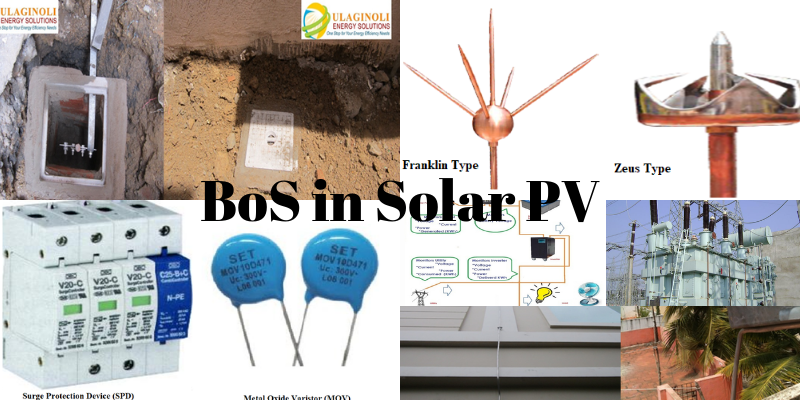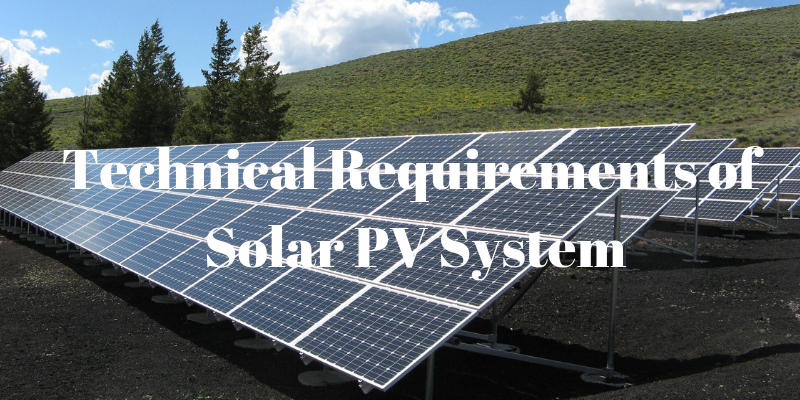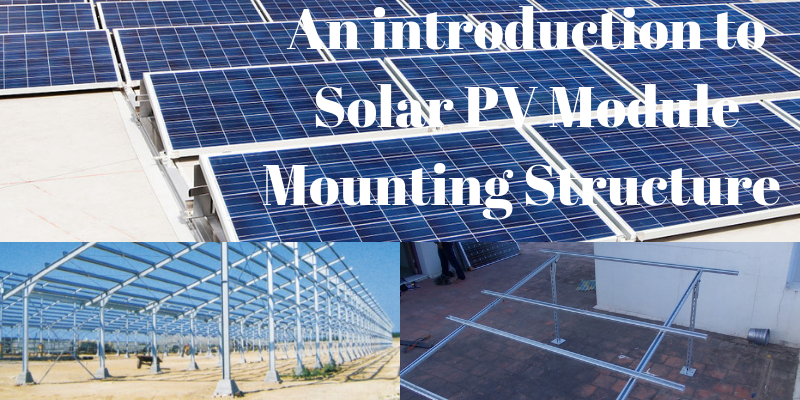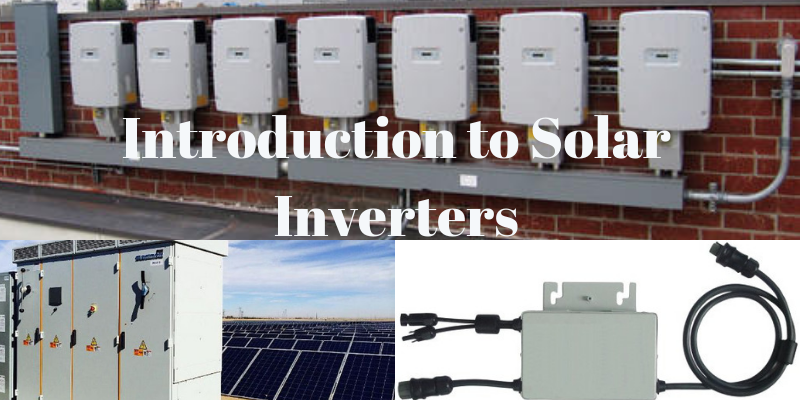An introduction to Balance of Systems in Solar Photo Voltaic Power Plants
Balance of systems play a crucial role in the effective functioning of the solar photo voltaic power plant. The balance of system include Cables, connectors, ACDB DCDB, Grounding system, lightning arrestors, remote monitoring, electrical panels and transformers (in case of power plants).
Cables
DC cables are widely used in solar photo voltaic systems. The DC cables are unique in certain ways when compared to their AC counterparts. They are bigger in size in terms of thickness are prone to harsh environmental conditions. The solar DC cable is usually made of the Annealed tinned copper conductor, cross linked polyolefin compound and zero halogen polyolefin compound. The outer sheath of the DC cable, which is usually in black colour is made of Halogen free Polyolefin. Following the outer sheath is the insulation made of Cross linked Polyolefin. The innermost layer is the actual conductor made of flexible tinned copper stranded class -5 conductors as per IEC-60228. The DC cable is made to resist harsh weather, mineral oils, acidic and alkaline environment, impact, tear and abrasion.
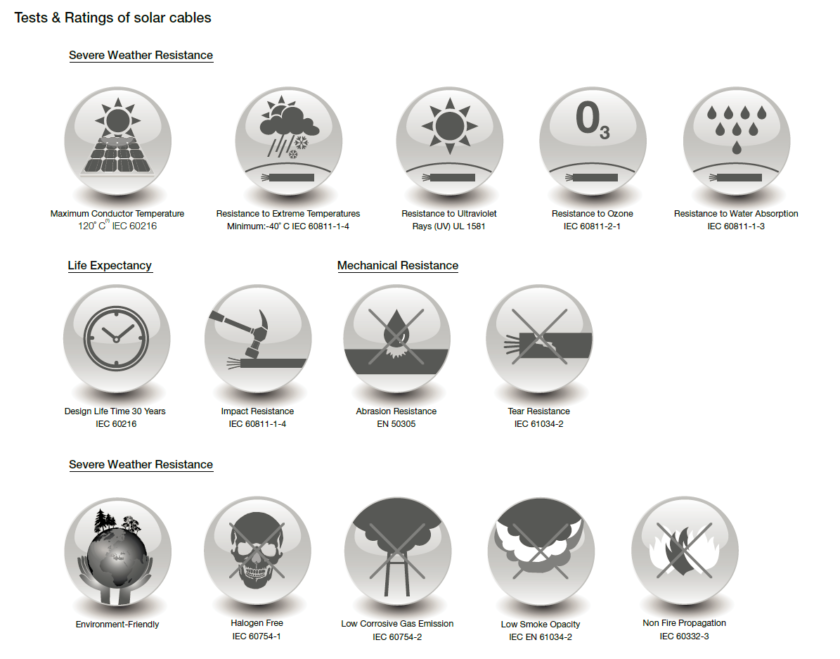
Connectors
MC4 connectors are used to interconnect solar PV modules and to connect solar PV modules to other components such DCDB. These MC4 connectors are water resistant and supplied as Plug and socket types to ensure proper connection. They are UV protected and has IP protection for both dust and water.
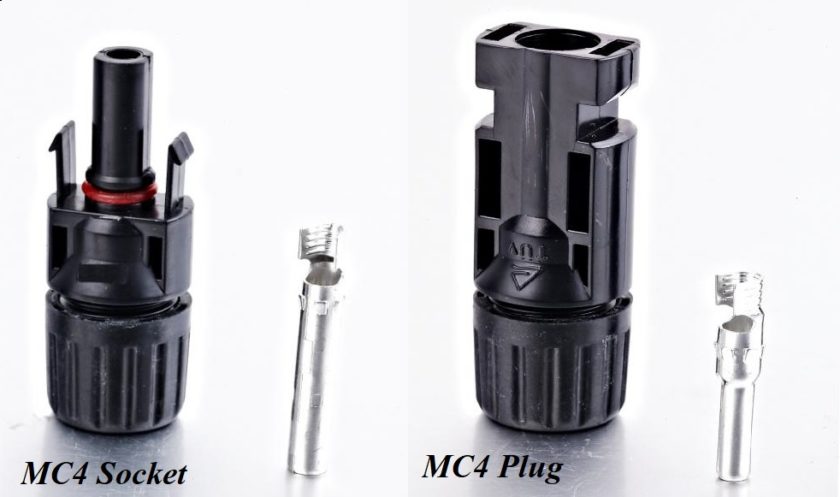
Array junction box is used to connect to the different string of solar PV modules in parallel and acts as DC switch. It consists of a DC circuit breaker, projection device such as MOV (Metal Oxide Varistor) or SPD (Surge Protection Device), input terminals from solar PV modules. Output terminals to inverter and earth terminal. The input and output terminal can be either MC4 connectors or sockets. These boxes are protected from both water and dust as they have IP protection not kess than IP65. The circuit breaker detects faults. If there is any abnormality, the circuit breaker trips off to protect the system. Circuit breakers are available both in AC and DC in various current ranges.
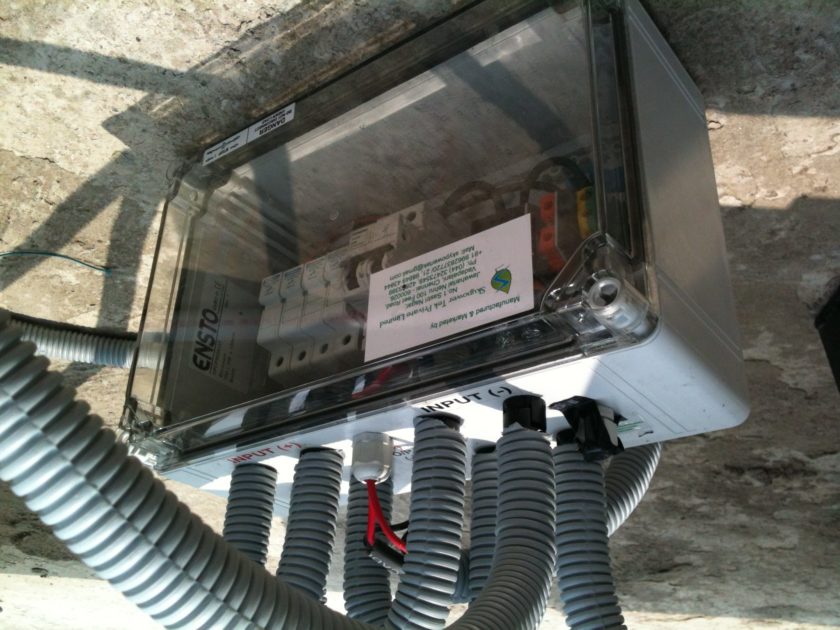
ACDB
ACDB is AC distribution board. It comes after the inverter. It is predominantly used in the On grid systems. The ACDB connects the on grid inverter to the grid supply. The ACDB has protection devices such as circuit breaker, fuse, SPD (surge protection device).
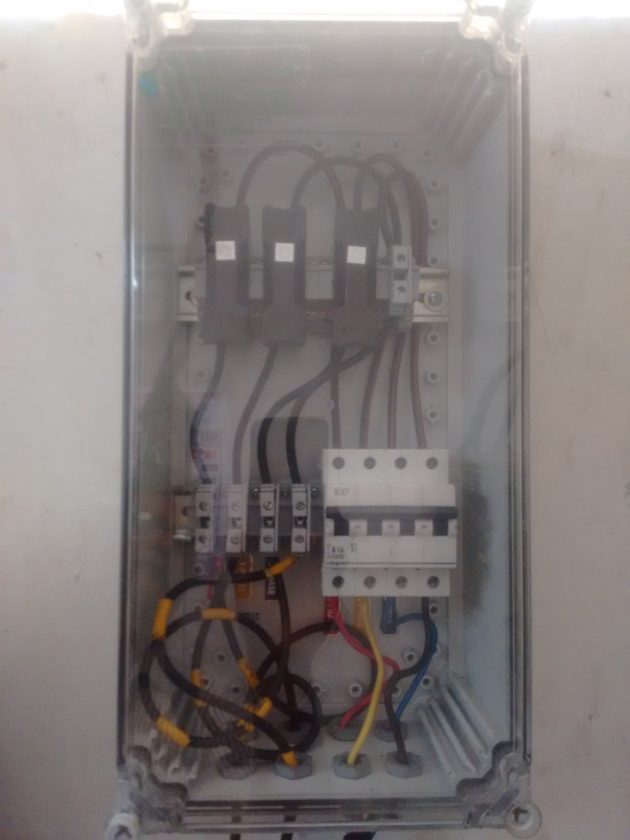
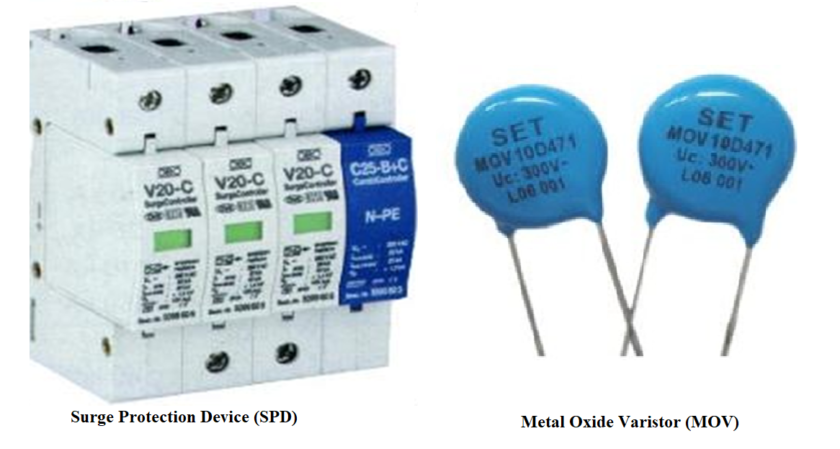
Grounding
Grounding gives protection against lightning and other mishaps. It has three main components, viz., 1) Down Conductor 2) Grounding rod and 3) Grounding Compound. The down conductor transmits the power to the earth pit which contains the earth material. The grounding rod transmits the power to the earth and neutralizes it. The grounding compound helps in neutralising the power in the shortest time possible. The number and length of grounding rod and the quantity of the grounding compound depends on the soil resistance at the required location.
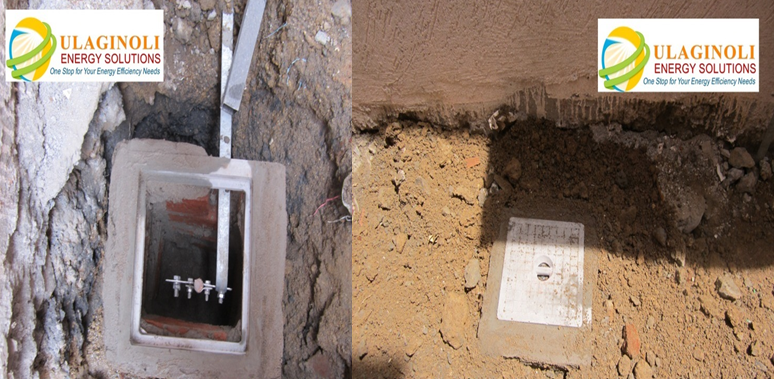
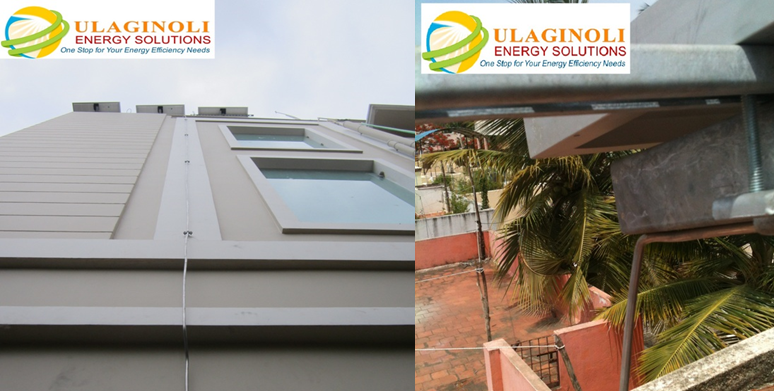
Lightning Arrestors
The lightning arrestor protects the system from Lightning effect. It discharges High voltage and surges to Ground, thereby preventing any adverse effect. It consists of three parts viz., 1) Lightning Arrestor Rod 2) Down Conductor 3) Grounding. The lightning arrestor rod is kept at the top and attracts lightning towards it thereby preventing any lightning to fall on other objects. The down conductor conducts the lightning power to the ground. The grounding recieves the lightning power and nuetralises it.
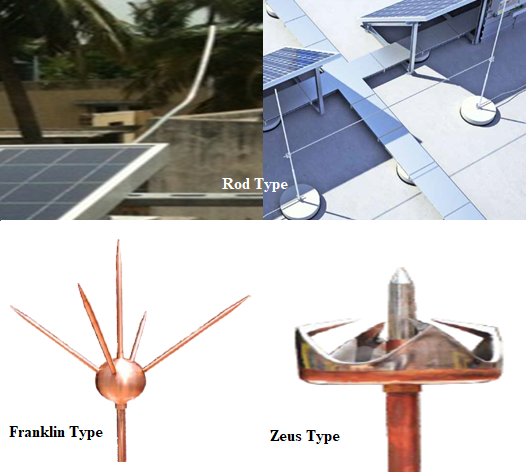
Electrical Panels
Electrical panels usually used in higher capacity solar Photo Voltaic Power Plants. They are used to connect the inverter to the grid. The panels are classified as follows
| Voltage Range | Classification |
|---|---|
| Up to 415 V | Low Voltage |
| 415 to 11 KV | Medium voltage |
| 11 KV and above | High Voltage |
| Up to 415 V | Low Tension |
| Above 415 V | High Tension |
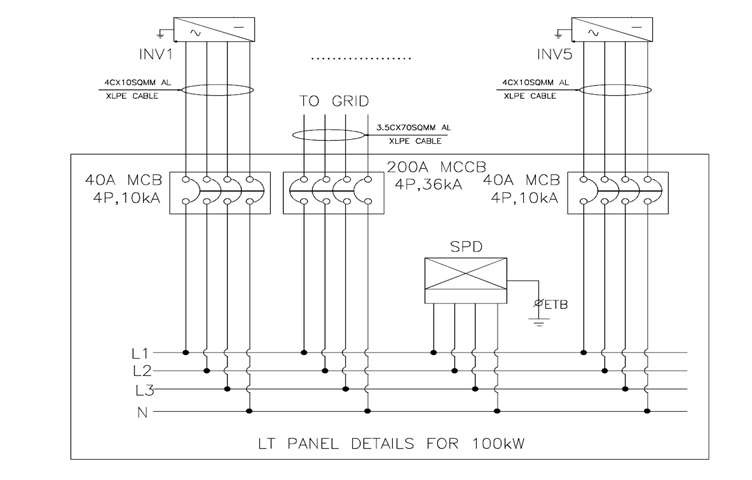
Transformers
Transformers are used in solar Photo Voltaic Power plants that are transmitting power to long distances or to a sub station. They either step up or step down th voltage depending on the requirement. This helps in reducing losses during transmission.
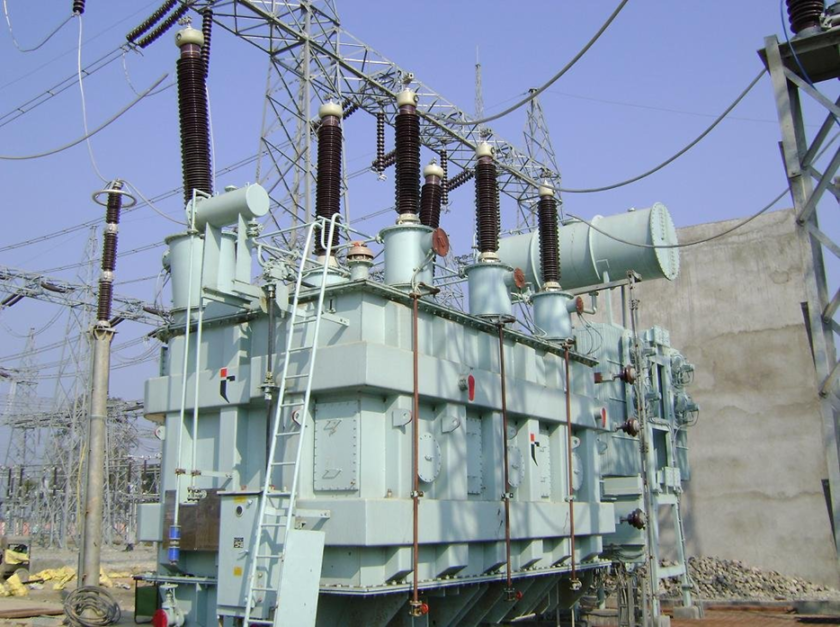
Remote Monitoring
Remote monitoring can monitor the system from any remote place. They are either wired or wireless. They record and display the following data
- PV generation
- Power Utilization
- Battery Voltage
- PV current
- PV Voltage
- PV Power
These data can be stored for a pre set time period.
